Mealybugs are common pests on houseplants and indoor gardens, though they will also invade outdoor plants. They can be a positive nuisance on many houseplants. In large numbers, mealybugs weaken and stunt plants, causing yellowing leaves, wilting, and fewer blooms. If the infestation is bad enough, the plant could die.

Jump to:
- Plants That Mealybugs Especially Enjoy
- What Mealybugs Look Like
- How Mealybugs Feed
- How Mealybugs Infect Plants
- Why Do Mealybugs Spread So Fast?
- How to Control Mealybugs
- What If My Plant is Infested with Mealybugs?
- Use Rubbing Alcohol for Mealybug Control
- Enlisting Ladybugs in the Fight
- Check the Roots for Mealybugs as Well
- The Best Way to Kill Mealybugs
- Why This Hands-On Approach Works Best
- Keep Checking the Plants, Even After the Mealybugs are Gone
Plants That Mealybugs Especially Enjoy
Imagine going to a buffet and seeing two steaks lying side by side. One steak is tender and juicy, while the other one is dry and tough. Which steak would you choose?
Mealybugs are the same way. They target soft-stemmed, succulent plants for the same reason. Cactus, fuchsia, poinsettias, palms, and ferns are commonly prone to mealybug attacks, along with philodendrons, African violets, jade plants, Norfolk island pine, schefflera, dieffenbachia, and pothos. However, mealybugs will attack many other plants.
They also like plants that have been heavily fertilized with nitrogen. This element greens up the plant and causes lots of soft, succulent new growth – and mealybugs will line up at this buffet in droves!
Citrus trees are targeted by the citrus mealybugs, which secrete an enzyme that deforms fruit.
What Mealybugs Look Like
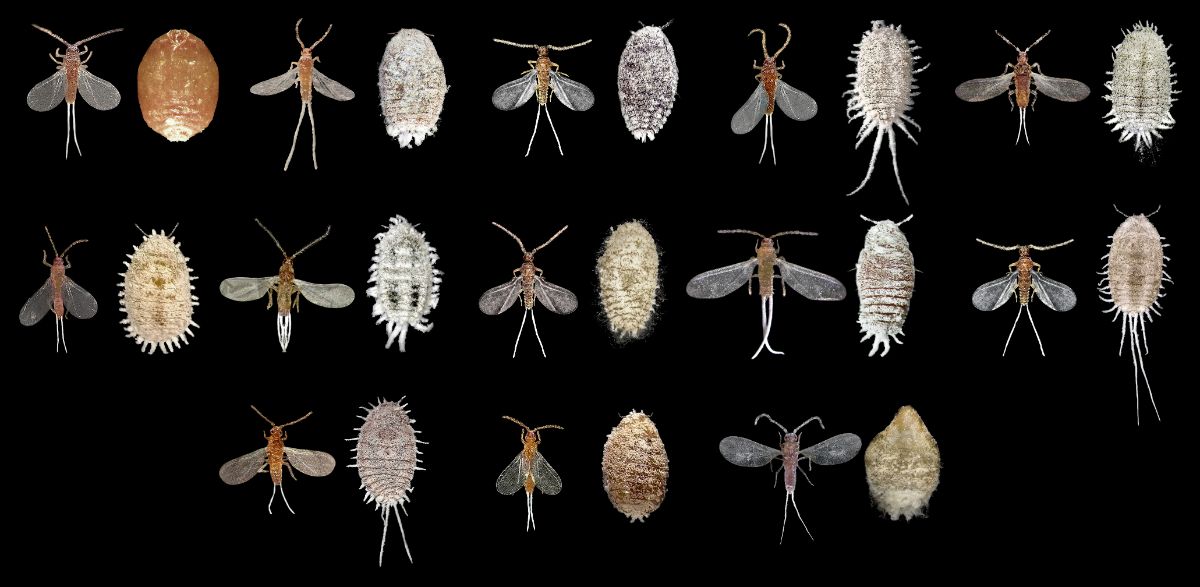
Mealybugs are white, sometimes pink, insects that don’t look like insects. The females look like oval bits of whitish, waxy fluff about 3 millimeters long. Some have long white “tails.”
When mature, male mealybugs resemble whiteflies or tiny white gnats, flying around in an annoying manner. Females are wingless and must be transported to new host plants to infect them. Once females mature, they stick themselves to the plant, cover themselves with a powdery wax layer that repels water (and insecticides), and suck plant juices through a straw.
Newly hatched mealybugs, called nymphs, are flat, oval, and yellow.
How Mealybugs Feed
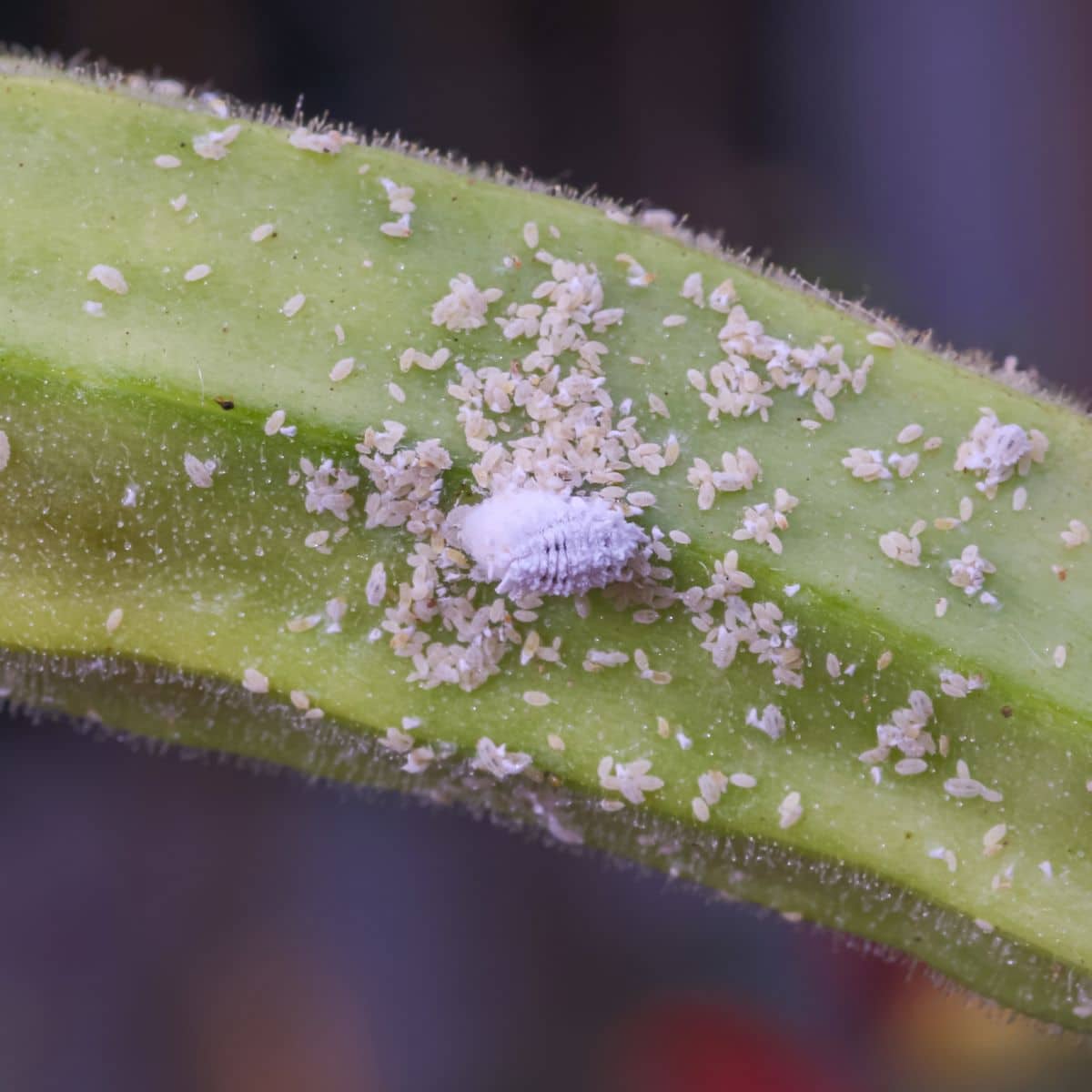
Female mealybugs feed by sticking their threadlike mouthparts – a piercing-sucking mouthpart called a proboscis – into the plant. They inject a little saliva into the plant to liquefy the cell walls in that area; then, they suck out the plant juices.
A plant can deal with a couple of mealybugs. However, if there are large numbers on the plant, it becomes stunted, or wilts, or dies back.
Mealybugs also excrete honeydew, a sugary substance. On an infested plant, the sticky honeydew is by sooty mold, turning the plant a sooty black color.
How Mealybugs Infect Plants
Nymphs can crawl short distances, but more often, they can be blown by the wind to a new plant to infect.
They can be picked up on the feet of birds as stowaways.
Most often, an infected plant is set down next to an uninfected plant, leaves touching, and the mealybug nymphs gallop across the gap like wild horses.
When they first arrive on a new plant, mealybugs tend to wedge themselves into those tiny spaces where a leaf joins the plant stem or tuck in against the vein of a leaf or any crevice they can find.
Why Do Mealybugs Spread So Fast?
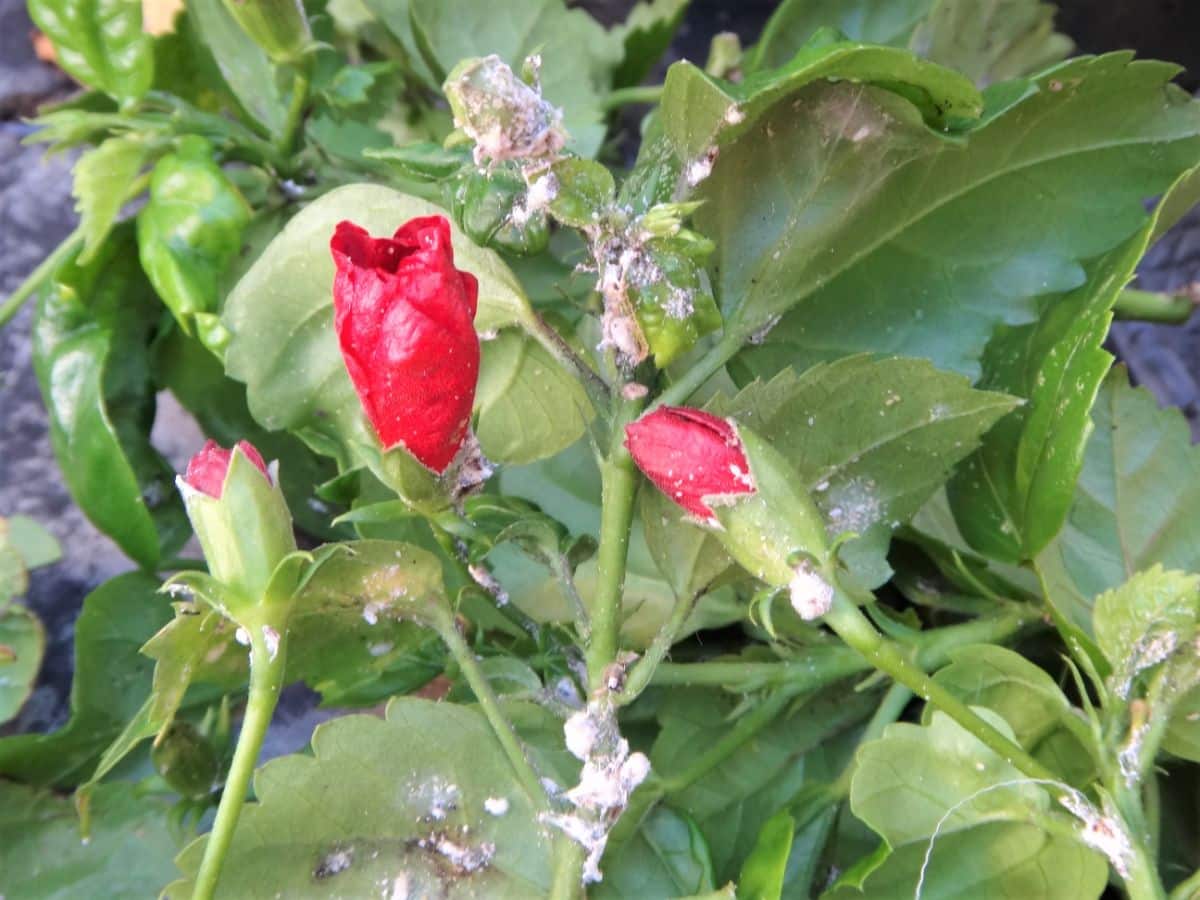
Once settled, a female makes an ovisac, which looks like a waxy bit of cotton and lays some eggs in it. Once that first batch of eggs hatch, that’s when the infestation starts. Other females join in the egg-laying spree, and then you have a mealybug crisis on your hands.
Mealybug females can lay, on average, 300 to 400 eggs in their lifetime. Sometimes, they can lay eggs that immediately hatch.
Some mealybug species, such as the Madeira mealybug, can create up to five or six generations every year. Imagine multiplying so fast that you could live on the same plant as your great-great-great-grandchildren in the space of a year!
For all these reasons – the rapid-fire egg laying, the many generations in a single year, the relative waterproofness of the insects, and the wooly egg sacks – it’s a challenge to stop a mealybug infestation.
How to Control Mealybugs
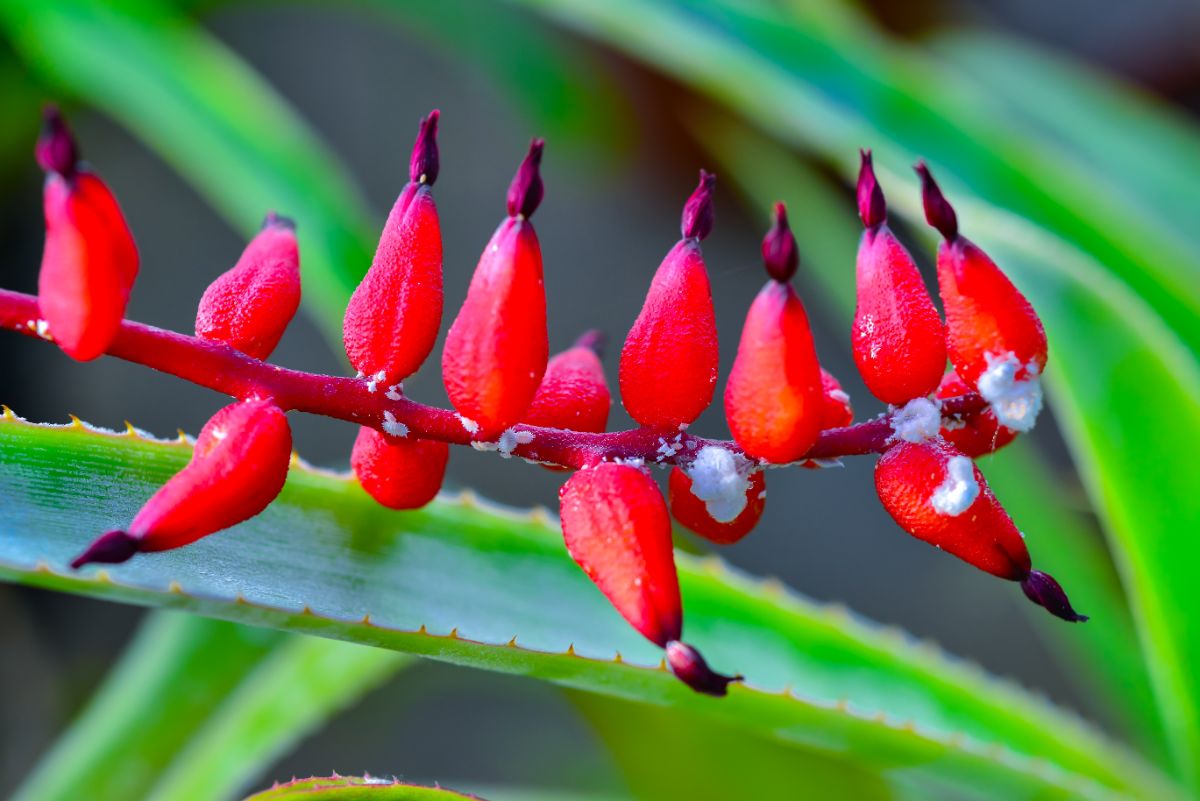
Outdoors, predators such as green lacewing larvae, and ladybugs can attack mealybugs and bring their numbers down (except when ants protect the mealybugs, farming them for their honeydew). But indoors, without the help of predator insects, control is more of a challenge.
Use several points of attack to get rid of infestations. Targeting your pest insect in multiple ways is the quickest way to knock down mealybug numbers.
Now, don’t do all of these things at the same time, especially when it comes to spraying. Also, keep doing these control methods until it looks like all the mealybugs are gone.
Even after the mealybugs are gone, be sure to check your plant every few days. Sometimes, a lone mealybug will show up from some hidden crevice … and within a few weeks, the plant is infested again!
What If My Plant is Infested with Mealybugs?
If the plant is badly infested, throw it out.
If you don’t want to throw out your plant, do these things.
- Isolate the afflicted plants so the mealybugs can’t spread to other plants.
- Cut off leaves and branches with large numbers of mealybugs. You might have to cut the plant back hard to get rid of the extra pests – but leave at least a half or a third of the plant to avoid stressing it further.
- Give the plant a bath with a little dab of dish soap. Rub the soapy water on the leaves and on the places where the mealybugs reside. Use a soft toothbrush on the stems. Spray water into places where mealybugs can hide. Then, spray off the plant to rinse it off and let it dry.
- Once a week, spray neem oil, insecticidal soap, or pyrethrin on the places where the mealybugs are congregating.
- A systemic insecticide applied to the soil can also be effective. This is watered into the soil, and the chemical is absorbed by the roots and enters the plant’s system. Now, the juice that the mealybugs are drinking is poisoned, and that generally kills them.
- Ants will defend mealybugs on plants as they do with aphids since mealybugs also produce a lot of honeydew. So, if you have ants on your plant, find out where they’re coming from and set out ant traps. If they’ve made a home in the pot, repot the plant and dump the ant-infested soil outside.
Use Rubbing Alcohol for Mealybug Control

Rubbing alcohol, or isopropyl alcohol, is a good way to control pests. It melts away the waxy protective layer on the insects and burns them. The fumes also kill insects. The alcohol evaporates quickly, leaving no residue behind.
Before spraying, though, be sure to test the alcohol mixture on a small part of the plant first. Spray no more than once a week because mealybug eggs take 7-10 days to hatch. Keep the plant out of the sun while the leaves are wet.
- Spray a mixture of 10 percent rubbing alcohol and 90 percent water directly on the insects. The rubbing alcohol will eat through the waxy coating that protects the insects, drying them out and killing them.
- You can even spray 70% isopropyl alcohol directly on the infestation – but not 90% because the higher percentage will definitely burn the leaves. Again, check a small area on the plant to be sure the plant won’t be affected. Thin-leaved plants seem to be affected adversely by this spray, so proceed with caution.
- Spray the plant on the upper and lower leaves, along the stem, and into the gaps where the leaf stems meet the main stem. Complete coverage, especially into the hiding places, wins the day.
- For smaller infestations or on sensitive plants, dip a cotton swab into rubbing alcohol and touch it to every mealybug you see.
Enlisting Ladybugs in the Fight
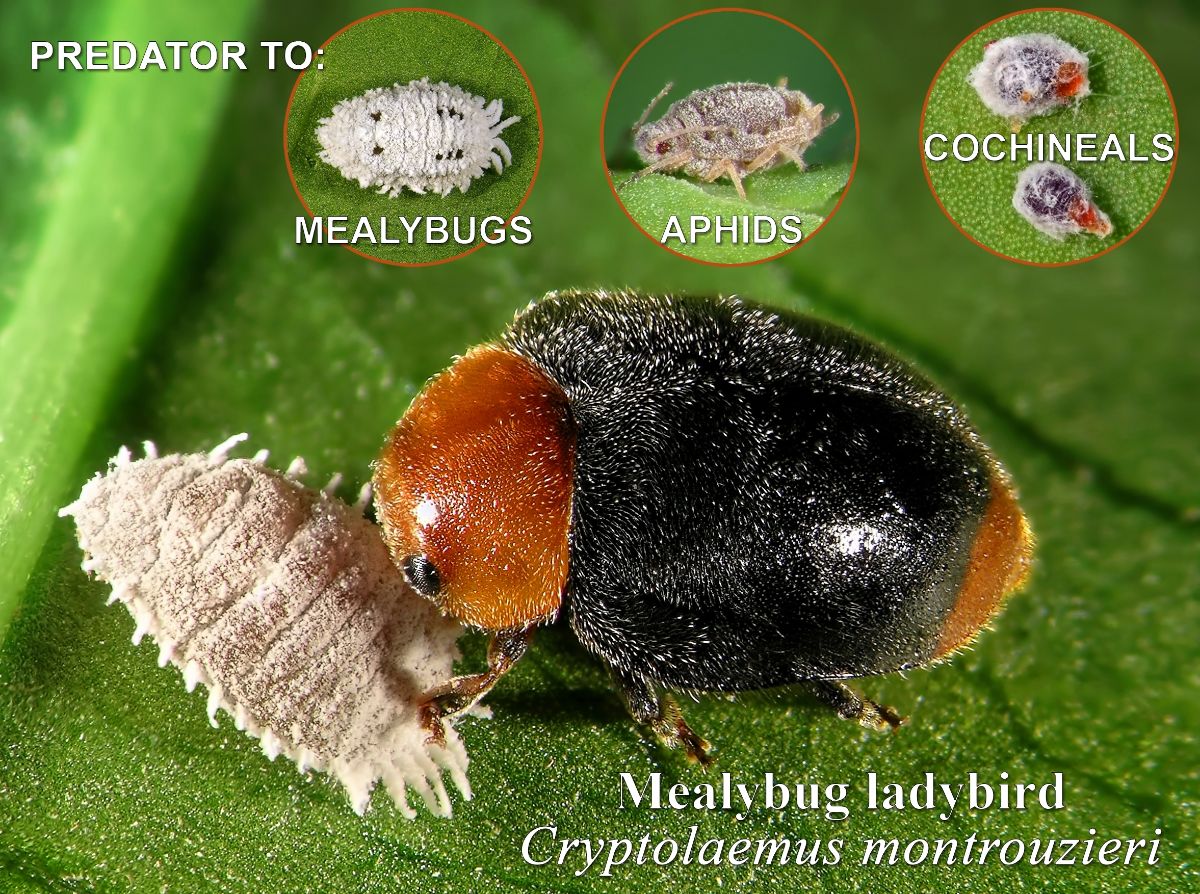
Usually, ladybugs are an outdoor mealybug killer. However, if a few ladybugs come into your house during the dead of winter, give them a nice meal. Put the ladybugs and your plant in a clear plastic container, such as the large container you’d buy cheese balls in. Close it up so they can’t get out, then let them eat.
For huge infestations, this isn’t as effective as other control methods and might take longer. However, if you have a small infestation and want to use an organic control that doubles as a fun science experiment, I recommend this.
I actually turned a ladybug loose on a staghorn fern with a stubborn scale infestation that I have never been able to completely clear up. The ladybug was going into cracks and crevices in the fern that were inaccessible to me, even with a toothpick. She also kept finding things to eat on the leaves’ surfaces that were too small to see. It’s fascinating and even kind of peaceful to watch ladybugs busily chowing down on tiny insects.
If you decide to just keep your plant and ladybugs together until spring, add a little water for them to drink and a few more insect-infested plants if you have them. If you don’t, put a few drops of honey here and there on the plant leaves to keep them going until you can turn them loose outside. This will keep them alive; however, ladybugs prefer to eat hundreds of small insects daily.
Check the Roots for Mealybugs as Well
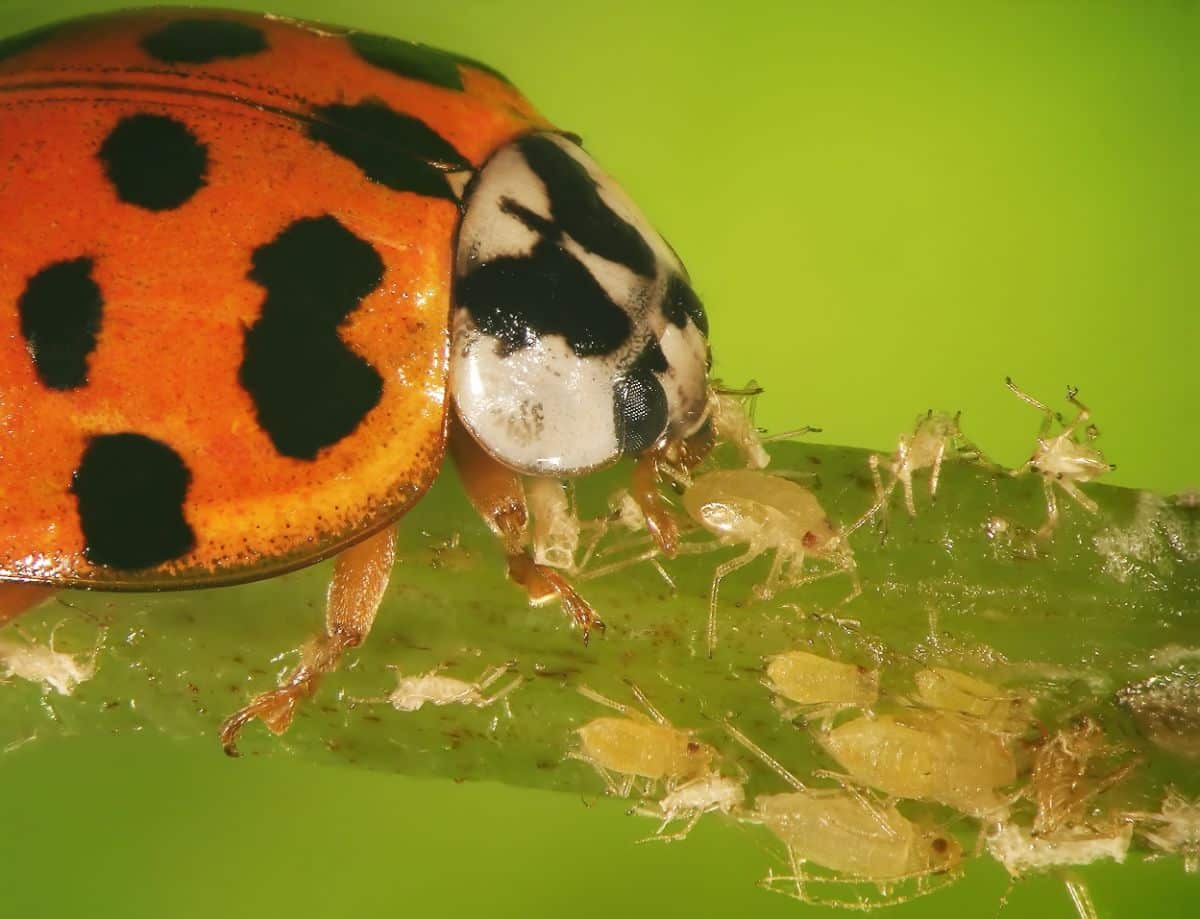
Brush some of the soil off the tops of your plant’s roots to check for root mealybugs. Yes, these accursed insects will also attack plant roots.
Use insecticidal soap in a root drench for root mealybugs. Add 1 to 2 tablespoons of concentrated insecticidal soap to a quart of water and pour this solution on the soil. One drench every month should clear them up.
If you’re spraying the plant with rubbing alcohol, you can also spray the stem where it meets the soil and spray the soil itself to moisten it by about a half-centimeter. This will reach mealybugs just under the soil’s surface and also can kill off any fungus gnat larvae that are developing in the soil.
The Best Way to Kill Mealybugs
Mealybugs can develop resistance to different insecticides – but they never develop resistance against being squished.
If it doesn’t make you feel ill, squish mealybugs (or any insect pests) when possible. This work is time consuming, and it’s icky. You have to check the plant every other day to keep ahead of every new batch of eggs.
Check the bottoms of the leaves and stems for mealybugs and their nymphs, and squish them wherever you see them. Use a toothpick to carefully dig out any mealybugs that have packed themselves into the crevices of your leaves and any other tight places where your fingers can’t reach.
Why This Hands-On Approach Works Best
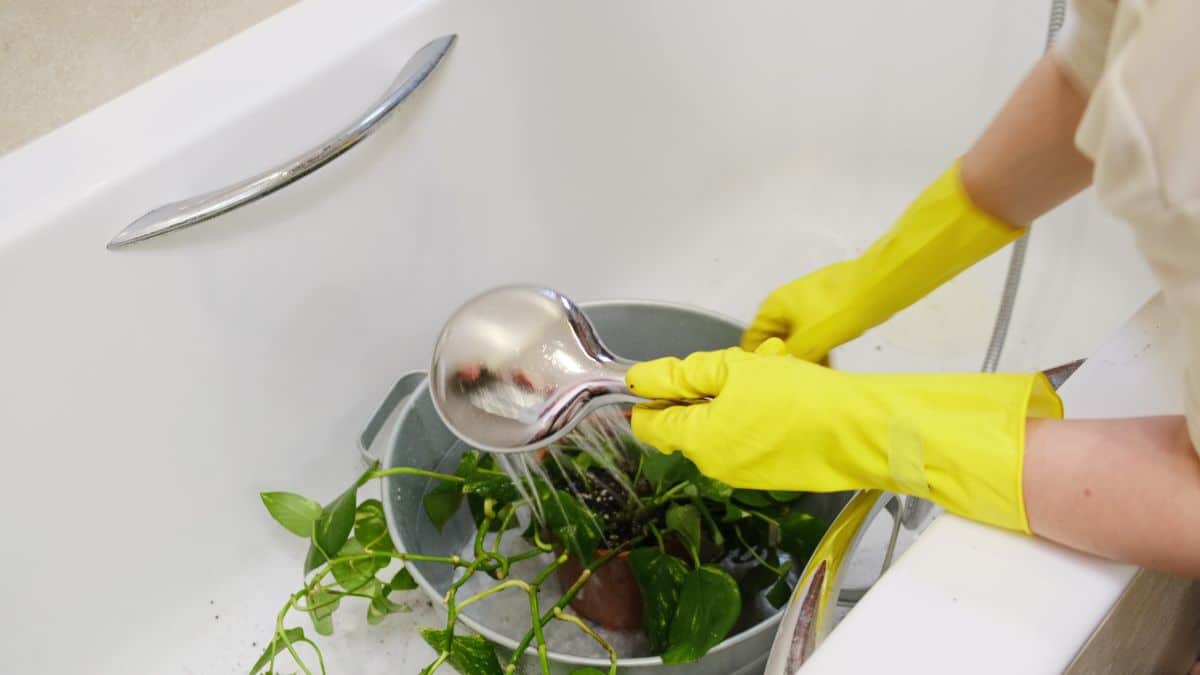
One of the mandevillas in the greenhouse had a huge mealybug problem. I sprayed the plant with insecticide until the leaves were dripping. The mealybugs seemed unperturbed. I watered a systemic insecticide around the roots, but the mealybugs kept on living and thriving!
So I started squishing the mealybugs. I squashed them where they were cuddled up around buds, in the cracks of the plant, and under the leaves. There were even some on the roots just under the soil. I squished those, then added some potting soil.
Every other day, every new mealybug was squished. Their numbers dwindled, and after a while, I stopped finding them altogether. So the mandevilla got a dose of fertilizer, and it put out leaves like crazy and started blooming. Success!
If spraying isn’t working, sometimes you just have to get your hands dirty with the plant to help it along.
Keep Checking the Plants, Even After the Mealybugs are Gone
Mealybugs are a hard insect to get rid of. When you finally get rid of them on your plants, it’s a great feeling. But don’t stop there. Keep checking your plants for mealybugs. Sometimes, one or two will get past your defenses – and if there are two mealybugs, pretty soon there are a half-billion on your plant again.
Keep an eye on the plants, and soon, you’ll be able to breathe easily, and your plants will prosper. It’s a good feeling when a plant you’ve been working with has righted itself and perks up again.

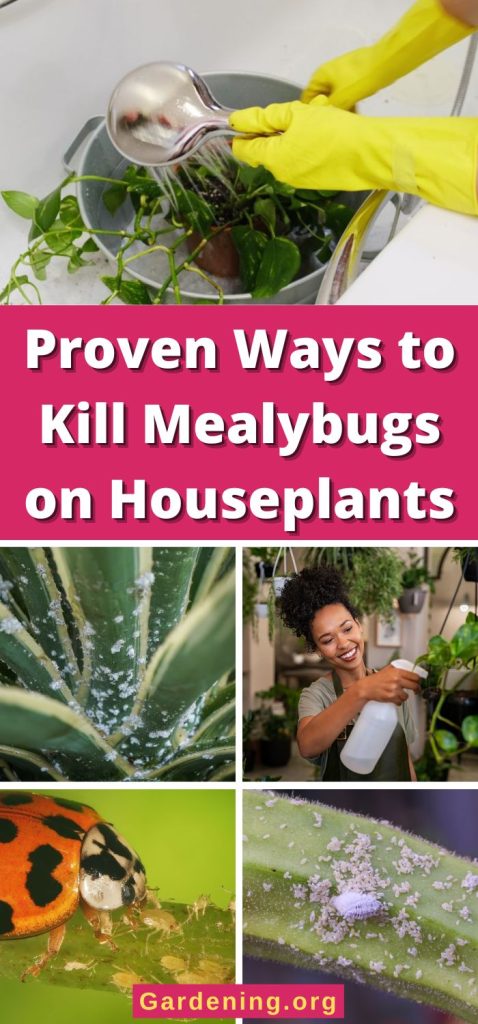
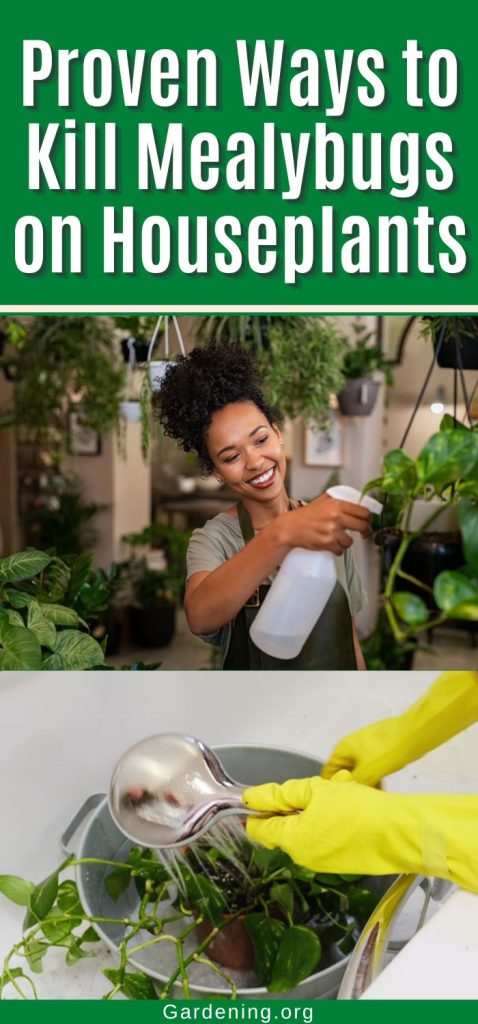
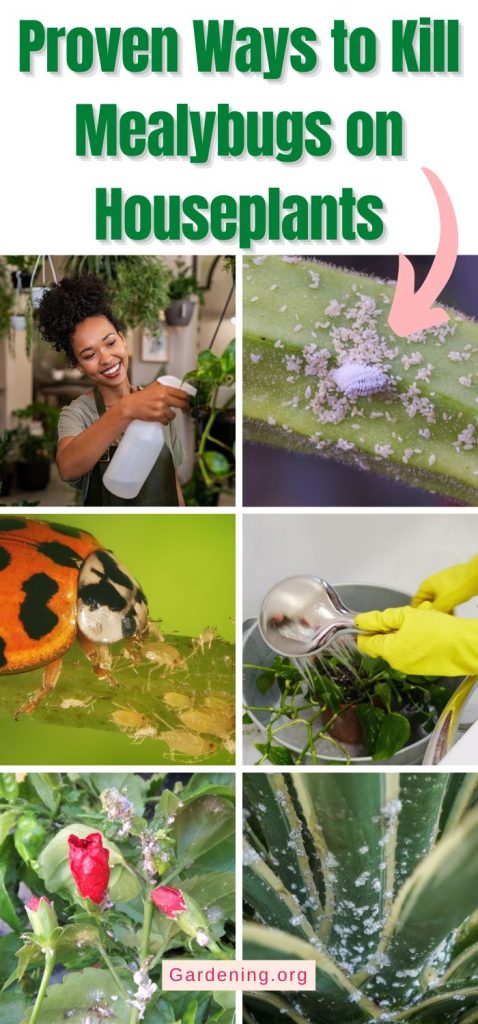
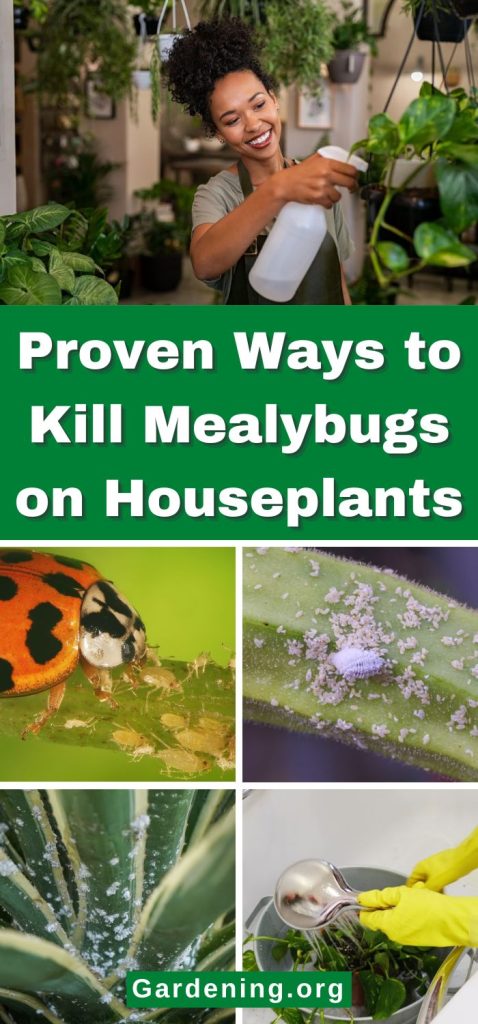




Leave a Reply